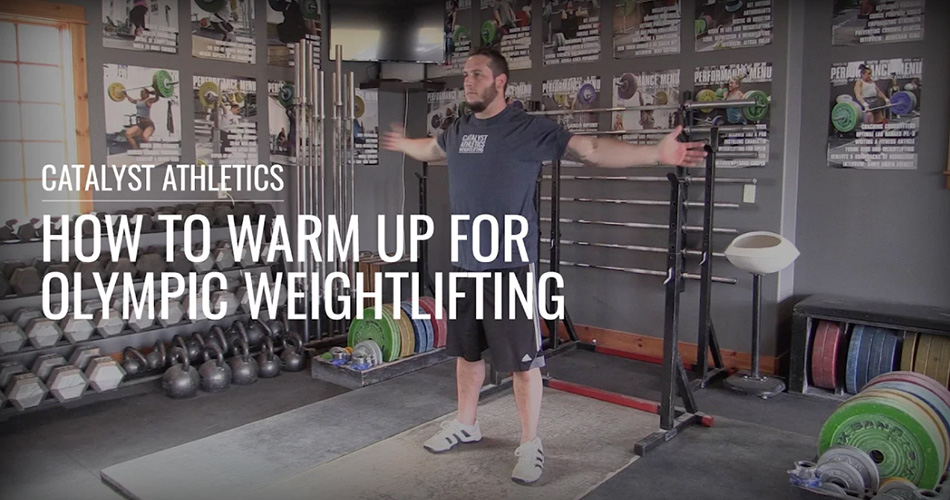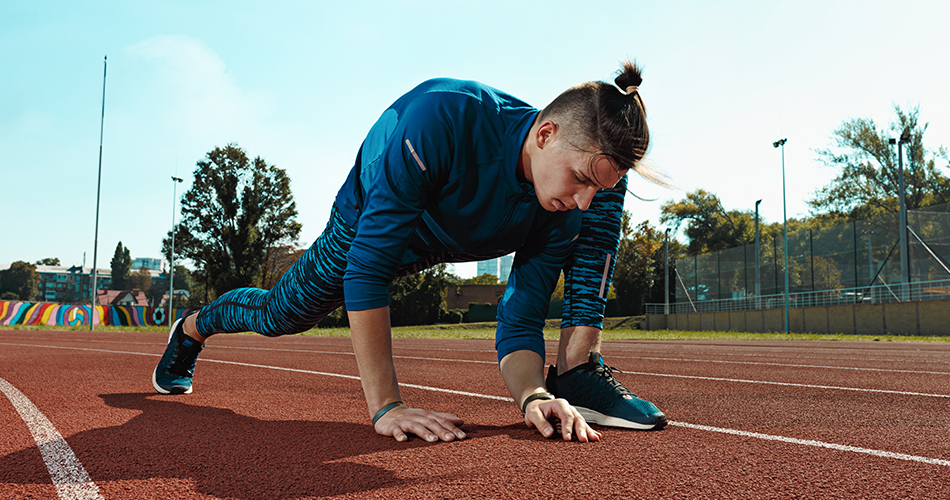Mobility as a Warm Up Routine
Why Mobility / Why Warm Up
My brother would say: »Oh come on sis, have you ever seen a rabbit warm up before being chase by a fox?«. And he was right, I haven’t. On the other hand, I’ve never seen a rabbit sit around all day or spend a single day without hopping around. I’m also pretty sure that if I was being chased by a bear, my adrenaline would be sky-high and my »fight or flight« response would be activated.
In the world of sports, that’s not how things work, however. We warm up in order to prepare our bodies for physical exertion. Several studies (Woods et al., 2007; Larson, 2014; Park et al., 2018) have found benefits of including a structured warm-up into training, which includes increased heart rate, blood flow, increased body temperature, core temperature, faster muscular contraction, and relaxation, improvement of the rate of force development, improved reaction time, consequently a reduced risk of injuries, enhanced psychological readiness, etc. The body is thus prepared for the upcoming workout or competition both physically and mentally.
It is possible to test and assess practically all of the cited desired consequences of the warm-up, although mental preparation may be tougher to asses (this is usually done with self-assessment questionnaires), as well as the warm-up as a tool for injury prevention (it wouldn’t be exactly ethical to expose athletes or recreational athletes to maximum muscular stress with and without a warm-up in order to prove a point). As part of research in this subject matter, Wood et al. have found that the warm-up provides a protective mechanism to muscle by requiring a greater length of stretch and force to produce a tear in the warmed muscle. For example increased neural transmission speed may improve reaction time and allow athletes to avoid injurious twists or falls.
In addition to said mental and physical benefits, the warm-up can also serve as a great tool to monitor your athletes, as well as a quick assessment and ultimately an opportunity to include corrective exercises specific to your athletes.
A question that has often come up in training circles is whether mobility training should be considered part of the warm-up?
What To Include In The Warm Up
Let’s touch on the subject of what to include in the warm-up. The following is a synopsis of models and classified segments of the warm-up based on applied research and work in the field of strength and conditioning.
Owen Walker (Science for Sport; Warm-ups) presents the primary warm-up model by dr. Ian Jeffreys called RAMP, which is an abbreviation of Raise, Activate and Mobilise, Potentiate. Mark Verstegen of EXOS has added an additional P to the RAMP model, which indicates Performance.
RAMP:
- Raise: raise body temperature, heart rate, respiration rate, blood flow, joint viscosity by using elements of crawling, running drills, sport-specific movements etc.
- Activate: activate key muscle groups. This depends on the upcoming training session or game, as well as individual needs. Often this includes activation of deep trunk muscles and pelvic stabilizers.
- Mobilise: mobilise key joint and ROM used in the activity. The same principles apply as in the activation phase. Generally, this is an opportunity to include t-spine mobility exercises or exercises that will serve as prehabilitation.
- Potentiate: this phase of the warmup is even more specific than the previous two phases, as it strictly relates to activities that will follow the warmup. The aim of this phase is to raise the intensity and improve subsequent performance utilizing the effects of post-activation potentiation, such as plyometrics and agility drills.
In his section Customizing the Warm-Up and Cool-Down in High-Performance Training for Sports, Rett Larson sets out a structure involving 6 components to the warm-up. Some of these components may be combined when we are short n time and depending on the needs of the individual and the activity that is set to follow the warm-up.
6 components:
- Tissue quality: this includes myofascial release, massage, trigger point release etc.
- Activation: targets weaker stabilising muscles, such as gluteus medius, the »core« and the rotator cuff muscles.
- Corrective exercises: these exercises are customized to individual needs or restrictions. This can include mobility drills and stabilisation exercises.
- Thermogenics: this is the phase when we raise tissue temperature. If have a limited time to warm up, Larson advocates devoting most of the warm up to this phase, even at the expense of other stages of the warm up, as raising tissue temperature is key to preparing the body for movement. This phase includes running drills, jumps and bounds and crawling variations.
- Active and dynamic stretching: at this stage we would address each joint according to its function (for example, stabilizing the lumbar spine while mobilising the thoracic spine), and variations of crawling and climbing can be incorporated here as they are great ways to facilitate subsequent movement based on their primal movement patterns.
- Neural preparation: this component applies post-activation potentiation or PAP and includes drills that acutely enhance muscular-force output.
Lance Goyke from IFAST University emphasises the importance of four essential components of the warm-up.
4 warm up categories:
- Reset: postural breathing aimed at enhancing mobility and facilitating better positions
- Alternating and unilateral movement: X-walk, walking lunge with rotation etc.
- Bigger compound movement: plate squat, jumping skill etc.
- Increase speed: skipping, dynamic exercise, accelerations, hip turn etc.
Woods et al. divide the warm-up based on its passive or active nature and whether it is general or specific to the sport or activity in question:
- Passive warm up (temperature is increased by external means)
- Active warm up (includes some kind of physical activity)
- General
- Specific (specific for the sport)
According to the quoted authors, the most efficient type of warm-up is said to be specific, possibly due to the fact that mimics the activity to be performed.
Before returning to the question of whether mobility ranks as part of the warm-up, let me add a few words on warming up as such, and touch on the above-referenced classifications. Each coach should understand the unique characteristics of the athlete in front of him or her, what activity they are about to undertake, and what the athlete’s particular traits are. They should also be aware of the environment (air temperature, space, etc.), the mental state of the athlete, any accumulated fatigue, the demands of the sport, and eventual restrictions inherent to the athlete in question. The warm-up should be adjusted for and customized to all of the above, and as such it should be a dynamic process that can be constantly adapted. Therefore, the warm-up should be adjusted not just to each individual training session, but, if possible, to each athlete. Planning the warm-up is thus just as important as planning the training session itself.
If we take a good look at the quoted classifications, we can identify elements of mobility in each of them. Obviously a key issue here is terminology or semantics, as the term mobility is interpreted differently by many stakeholders. As you may have seen in my previous articles, my interpretation of mobility is the capacity to activate and stabilize a joint as well as to achieve an active range of motion or ROM and to be able to express force through a full range of motion. Mobility exercises can also be very distinct, for example, they can be seemingly static (isometric contractions), they can include various rotary movements (controlled articular rotations), or they can be very dynamic in nature (e.g. primal movement) … Moreover, so-called flexibility training (static stretching) can make up a part of mobility training and certainly doesn’t need to constitute an essential part thereof. If I had to define mobility as a component of the warm-up, stretching would be a separate component and would not be part of the warm-up itself. This is in line with the view proposed by Rett Larson, who states that this component is best integrated outside of training. At this point, it is perhaps relevant to touch on the issue of stretching with regard to performance, with some studies indicating that stretching prior to training actually decreases athletes’ performance, particularly endurance outcomes (although it is worth noting that the level of evidence of said research was identified as limited research-based evidence as outlined by McCrary et al.). Again, other research has shown the neutral effects of short duration static stretching on power outcomes. That is, static stretching was found to be a largely ineffective method for performance enhancement. Moreover, in terms of injury prevention, Walker has found that there is little evidence, if any, to indicate that pre- or post-exercise static stretching reduces injury. Woods et al., on the other hand, have found that stretching indirectly influences injury prevention, quoting that in order to successfully complete an activity without injury, the muscle must have the »stretchability« necessary to move through that range without causing an increased tension/stress or load on the muscle. Muscles absorb as much of this stress as possible before the injury. When considering studies based on performance in specific sports, Fletcher et al. (2010) have found dynamic stretching conditions to be superior in performance outcomes when compared to static stretching during the warm-up in soccer players, although the selection of warm-up drills seems to be arbitrary.
Now I’d like to present an example of my warm-up protocol, which includes mobility as a component element of the warm-up.
First and foremost, we should be cognizant of who the athlete in front of us is, and what type of training we are about to deliver to the athlete or group of athletes.
Case study 1:
A group of recreational athletes warming up for a total body workout, with an emphasis on quad dominant and pulling movements or splits.
The video series includes an example of a warm-up for a specific group of clients/athletes. The sequence features elements of the warm-up that I would consider essential:











Responses